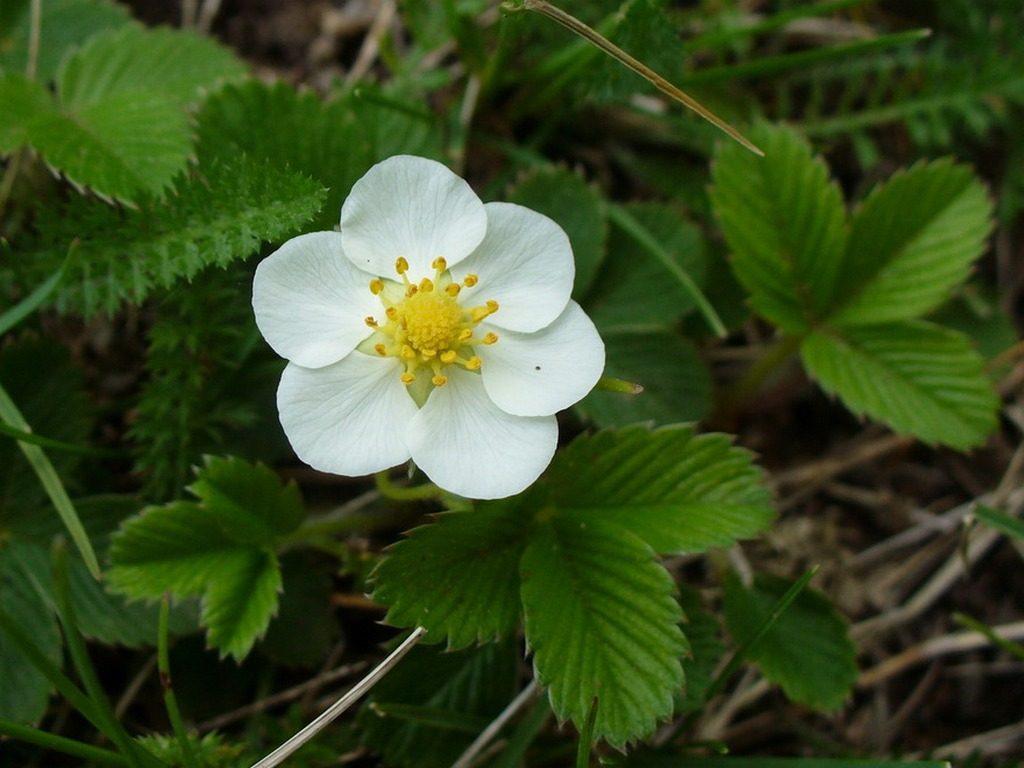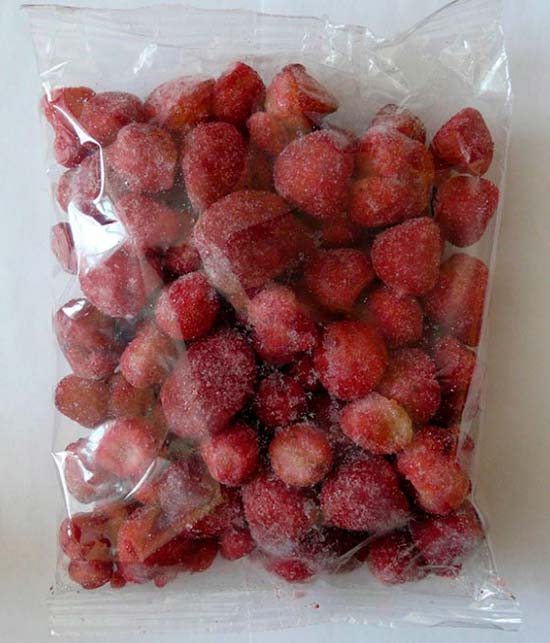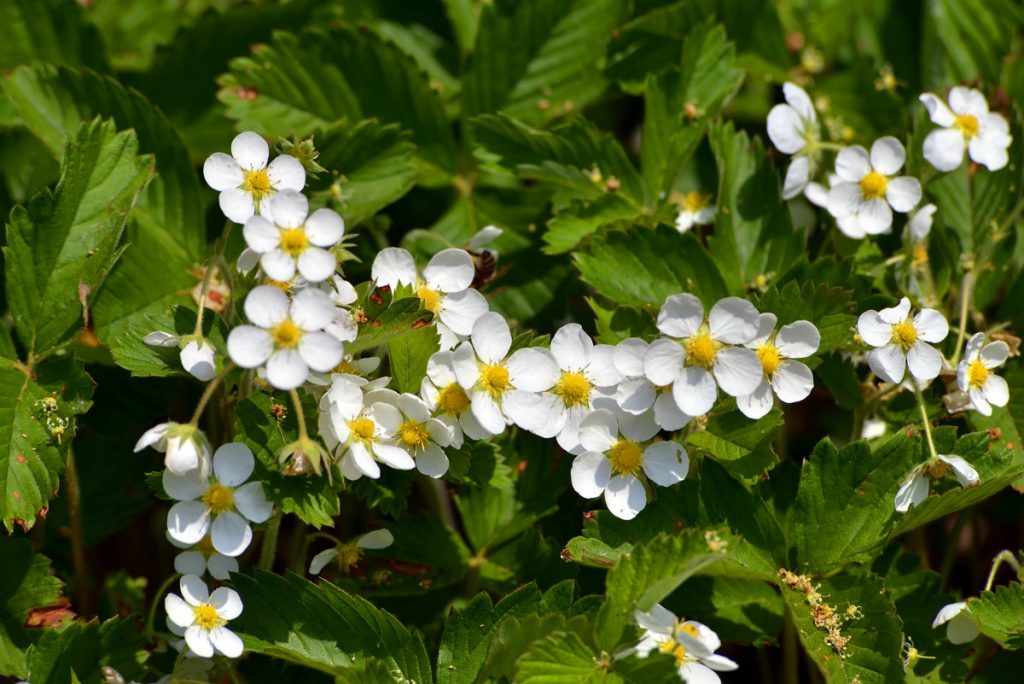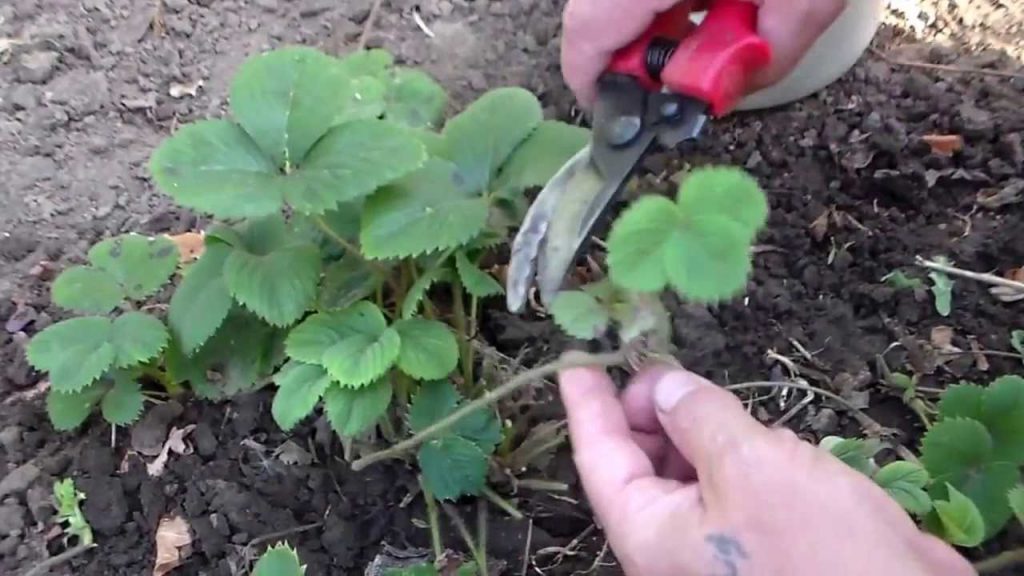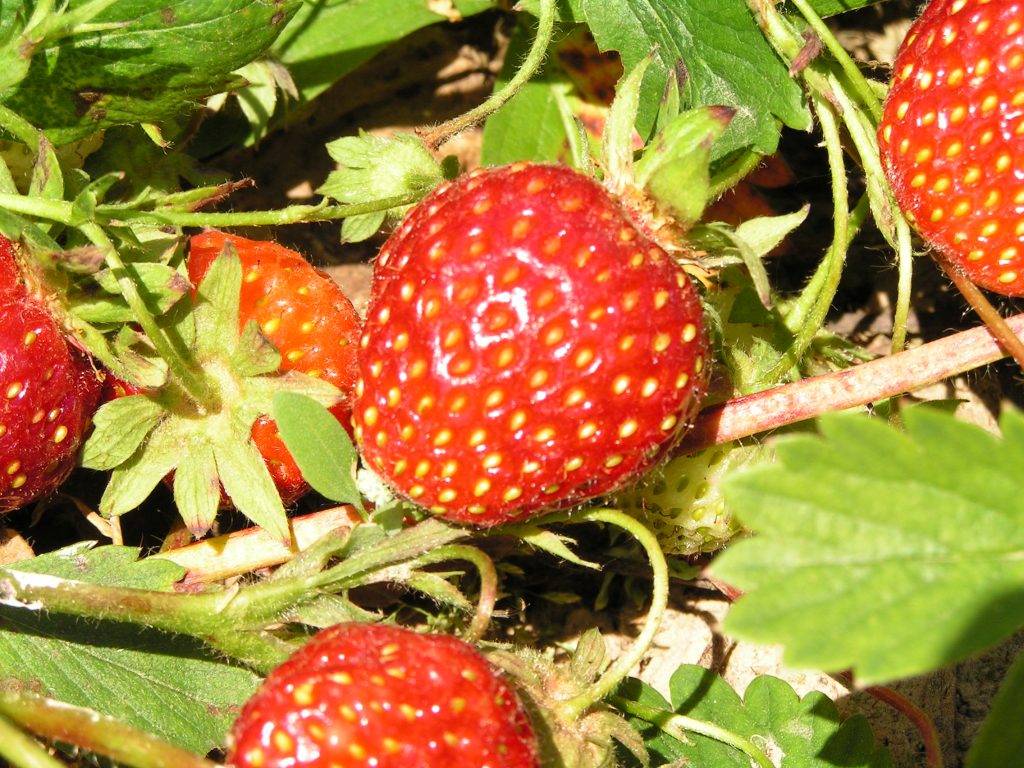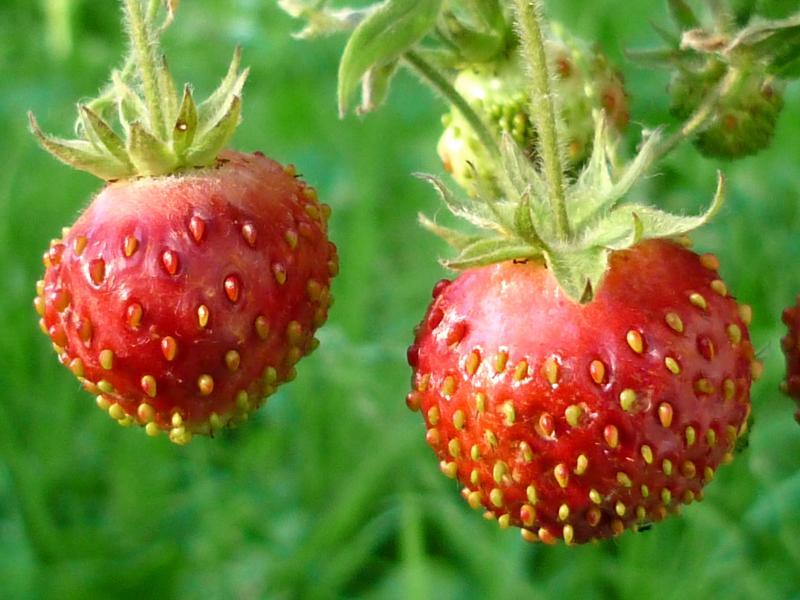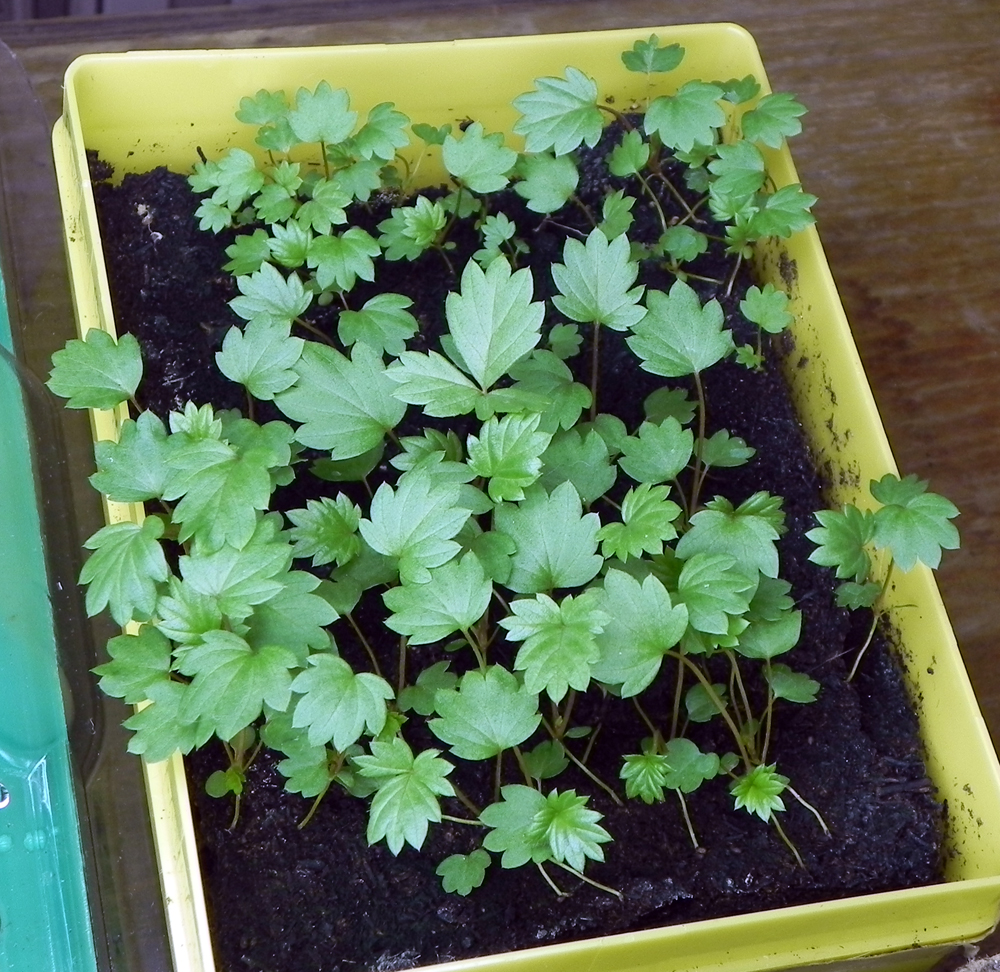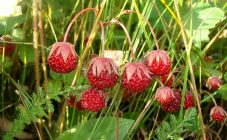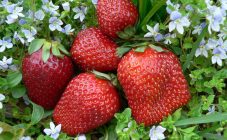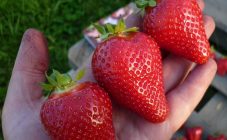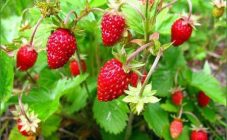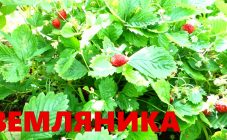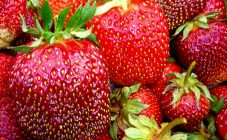Content:
Which family does the strawberry belong to? The perennial strawberry plant belongs to the Rosaceae or Rosaceae family. The name Fragaria is translated from Latin as "fragrant". The berries are located close to the ground, so in Old Slavonic the plant was called "strawberry".
East Asia, and according to some sources - South America is considered the birthplace of strawberries. Images of strawberries are found in drawings in ancient Greece and in Rome. The first to describe strawberries was J. Bock, a doctor, priest and caretaker of the botanical garden of the city of Zweibrucken, in 1553.
Plant structure
The leaves have a complex shape, are located on long, 10-25 cm, petioles. The edges of the leaves are serrated. The size depends on the species: the leaves can be small, medium and large. The bottom is usually pubescent.
The root system is fibrous brown. The roots are well developed and lie at a depth of 25 - 30 cm.
Inflorescences are on peduncles, rosette extending from the root collar. Flowers are usually bisexual, but there are also unisexual flowers. The petals are collected in a scutellum with many stamens and pistils. Strawberry flowers are pollinated by insects.
What botanists call strawberry seeds
Are strawberries a nut or a berry? Everyone is accustomed to calling the fruits of strawberries berries. Botanists believe that these are multi-nuts or false berries. Juicy, fragrant red pulp is a receptacle, and small brown seeds are nuts.
Everyone's favorite delicacy is a pantry of the most valuable vitamins and microelements. The mineral composition of the berries is also unique. The fruits are rich in fluorine and cobalt, iodine, phosphorus, manganese. Strawberry leaves contain natural flavonoids, essential oils, and mineral salts.
With diabetes of any kind, it is important to include strawberries in the diet. A low glycemic index (15-25 GI) and a special composition of berries regulate metabolism and protect the body from the accumulation of free radicals. Fresh or defrosted strawberries can be added to fruit desserts, diet baked goods, compotes. The main thing is not to overeat and consult a doctor in a timely manner.
It is permissible to include strawberries in the dietary menu, since its calorie content is 30 - 40 kcal per 100 g of product.
What can be made from strawberries
If it is planned to prepare decoctions and infusions from strawberries throughout the year, freshly picked leaves and berries are dried, laid out in a thin layer on a spread fabric in the shade or in special devices. In the morning and in the evening they drink a glass of fragrant tea.
It is useful to eat strawberries fresh, but you can prepare berries for future use and add to a variety of dishes, drinks, berry desserts.
How to freeze strawberries
Rinse the berries thoroughly, dry them and put them in a freezer in a thin layer. When the fruits are frozen, they are put into storage containers. In winter, the berries will be whole, they will not crumple or stick together.
Vitamins for the winter
A tasty preparation is obtained if strawberries are rubbed with sugar without heat treatment. All nutrients and vitamins will remain in the mixture until spring. For this you need:
- Sort the strawberries, rinse, remove debris and let dry.
- Add sugar to the prepared berries to taste.
- Beat the mass with a blender and remove for a day.
- Arrange the treat in sterilized jars, roll up and put in a cold place.
Strawberry jam
- Sort the berries, wash and put in a basin.
- Sprinkle each layer with sugar and leave until the berries give juice. Take 1.2 kg of sugar for 1 kg of berries.
- Bring the mass to a boil, remove the foam and remove from heat. So repeat several times, until the berries become transparent, and the syrup thickens a little.
- Cool, put in clean dry jars and store.
Why are strawberries bitter? The berries that are collected in the pine forest have a bitter taste. If you add a handful of blueberries, raspberries, or red currants to the jam, you can get rid of the bitterness. In old cookbooks it is advised to put raw peeled carrots in boiling jam, and then remove, then the bitterness will go away.
Strawberry compote
- For 3 liters of compote, you will need a liter jar of pure berries and 0.5 kg of sugar.
- Pour the berries into a three-liter jar and carefully pour boiling water. Cover with a lid and wait 10 minutes.
- Using a special lid, drain the water into a saucepan, pour sugar there, boil.
- Pour boiling syrup into berries, roll up and wrap with a blanket until it cools.
Description of garden and wild strawberries: characteristics, examples
As a fruit crop, strawberries have been cultivated since the 16th - 17th centuries. It is often mistakenly referred to as strawberry. There are now over 10,000 varieties.
Strawberries can grow anywhere other than swampy soil and dry sand. In those places where groundwater rises high or flooding occurs, plants will die. After nightshades and next to raspberries, strawberries will hurt and will not yield a harvest. In one place, strawberries grow and bear fruit for 4 - 5 years.
Before planting, the soil must be prepared:
- to clear from weeds;
- neutralize pests from larvae;
- add organic matter and fertilizers;
- dig up the ground.
Why does strawberry bloom but not bear fruit? With an excess of fertilizers, the seedlings begin to grow strongly (fatten) to the detriment of fruiting, they can bloom and not produce fruits, although they need a lot of nutrients.
To get high-quality seedlings and propagate strawberries, 2-3-year-old fruitful bushes are chosen. After picking the berries, the aisles are carefully loosened. On the fertile bushes, the shoots of modification - the mustache - begin to grow rapidly. Rosettes of leaves and rudiments of roots are formed on them, which must be pressed to the ground. As soon as 2-3 leaves grow on young bushes, you can dig up and transplant the seedlings to a new bed.
You can propagate strawberries by seeds. They are sown in January - February and must use lighting and film. Strawberries emerge unevenly: from 2 to 4 weeks. The film is removed from the bowl and placed in a cool, bright place. Water the seedlings with a teaspoon or pipette, taking care not to damage thin seedlings.
It is advisable to harvest seedlings immediately before planting. The roots are shortened to 6 - 8 cm, dipped in an earthen chatterbox. The seedlings prepared in this way are immediately planted or removed in a dark, humid place for short-term storage.
Another method of planting is considered more productive: plants are planted in groups of 3 at a distance of 10 cm.Such nests are placed in rows from each other every 50 cm.
The aisles are loosened and sprinkled with any mulching material.To prevent the seedlings from withering, you need to shade them.
Bushes need watering and regular feeding. When flowering, you need to make sure that the plantings are not frozen and overheated. If the whiskers are not needed for reproduction, they are cut off, otherwise the forces of the seedlings will be directed not to fruiting, but to the growth of shoots. In addition, the beds need to be weeded and pest controlled.
In areas with unfavorable climates, care should be taken to protect the seedlings from frost in winter and from heat in summer. In autumn, the berries are covered with leaves, straw or dry tops.
Strawberry yield drops sharply after 4-5 years. In advance, you need to plant the seedlings in new beds, and dig up the vacated ones and use them to grow vegetables.
Why trim? If the above-ground portion of the plant is cut after harvest, new leaves will grow. The bushes rejuvenate, freshen and bear fruit in one place much longer.
Strawberry varieties
When choosing the right variety for a summer residence, they look at many signs: ripening time, size and shape of berries, resistance to diseases and temperature changes.
According to the ripening period, garden strawberries are divided into remontant, late, mid-ripening and early.
From early maturing, the following varieties are very popular:
- Elvira is a Dutch variety with shiny round berries weighing up to 60 g. Red pulp is sweet and aromatic. Resistant to fungal diseases.
- Kent is a Canadian variety with round-conical berries. Resistant to frost, gray mold, powdery mildew, fungal diseases. At the beginning of autumn, it blooms and bears fruit a second time.
Popular mid-season varieties:
- Juan. The strawberry of this variety is beautiful and large, about the size of an average apple. The pulp is sweet, light red, firm. The variety is able to adapt to bad weather conditions.
- Venta is a super elite high-yielding variety from the Baltics.
Large, beautiful berries turn dark red in the heat.
- Lord is a self-pollinating variety, frost-resistant, resistant to gray rot. Fragrant sweet berries of a round-conical shape with bright red dense pulp.
Late-ripening varieties:
- Vima Xima is a Dutch new variety with large, dark red berries. Releases a little mustache for easy grooming.
- Vicoda is a Dutch variety, resistant to spots, white mold, winter hardy. Delicious, comb-shaped, dark red berries reach 120 g.
- Borovitskaya is a self-fertile, high-yielding variety. Berries with a groove in the middle are doubled. Resistant to temperature extremes and diseases.
Neutral or remontant varieties:
- Queen Elizabeth II is one of the best remontant varieties with fragrant large berries that can bloom throughout the summer.
- Garland is a continuously blooming and fruiting domestic variety with delicious aromatic berries. Suitable for growing in pots or on a vertical trellis.
In 2018, new varieties of strawberries appeared: Alba, Christina, Honey, Clery, Kimberly.
Wild strawberries
Wild strawberries are found in the European part of Russia, in Eastern and Western Siberia, in the Urals, in the Caucasus. Grows on hills, sunny slopes, clearings, quickly spreads with creeping shoots.
Due to its medicinal properties and taste, strawberries are very popular. Russian scientist S.M. Vasiliev in his book "Strawberry Treatment" described the beneficial properties and effects of drugs on all organs and systems of a person. Dried leaves and berries of wild strawberries can be bought at the pharmacy, or you can prepare at home.
Traditional medicine recommends using the roots, leaves and berries of strawberries. When using infusions and decoctions, the work of the digestive system, respiration, and cardiac activity is improved.
- The berry is recommended for metabolic disorders, vitamin deficiency, obesity, and bronchial asthma.
- Decoctions and infusions from the leaves help with heart problems, choking, uterine bleeding, stomach ulcers and gastritis.
- Strawberry juice is effective for eczema, anemia, and wound healing.
Frequently asked questions about strawberries
How to keep strawberry seedlings until spring
If, for some reason, the strawberries were not planted in a permanent place, you can put the seedlings in boxes with holes at the bottom and take them to the basement or put them in the refrigerator. Line the bottom of each box with moss, sawdust, so as not to dry out the roots. The air humidity should be at least 90%, and the temperature should be 2-6 ° С. If the temperature is higher, then the seedlings will begin to germinate, and if it is less, they will freeze. The room needs to be ventilated or boxes with seedlings should be sprayed.
How to store strawberries after picking
You need to pick the berries in dry weather. When picking, the strawberries are plucked together with the stalks and carefully placed in a dish. Make sure that the berries are intact, otherwise the disease will quickly spread and spoil the entire crop.
Fresh berries can be kept in the refrigerator for no more than 3 days. Do not wash the berries, do not break off the stalks. The lid should not be tight. If the berries are washed and cut off, then they can be lightly sprinkled with sugar and left for 1-2 days.
Why garden strawberries do not bloom
With excessive application of nitrogen-containing fertilizers or manure, plants begin to intensively increase the green mass. Peduncles are not laid. Another reason is untimely or incorrect pruning of bushes, when flower buds do not have time to form or die during frosts. Flower buds can be damaged by the weevil beetle. It is better to prevent this phenomenon by treating in advance with preparations from pests.
If you follow the recommendations of experienced gardeners and agronomists, the berries will ripen together and will delight you with homemade taste and aroma.
